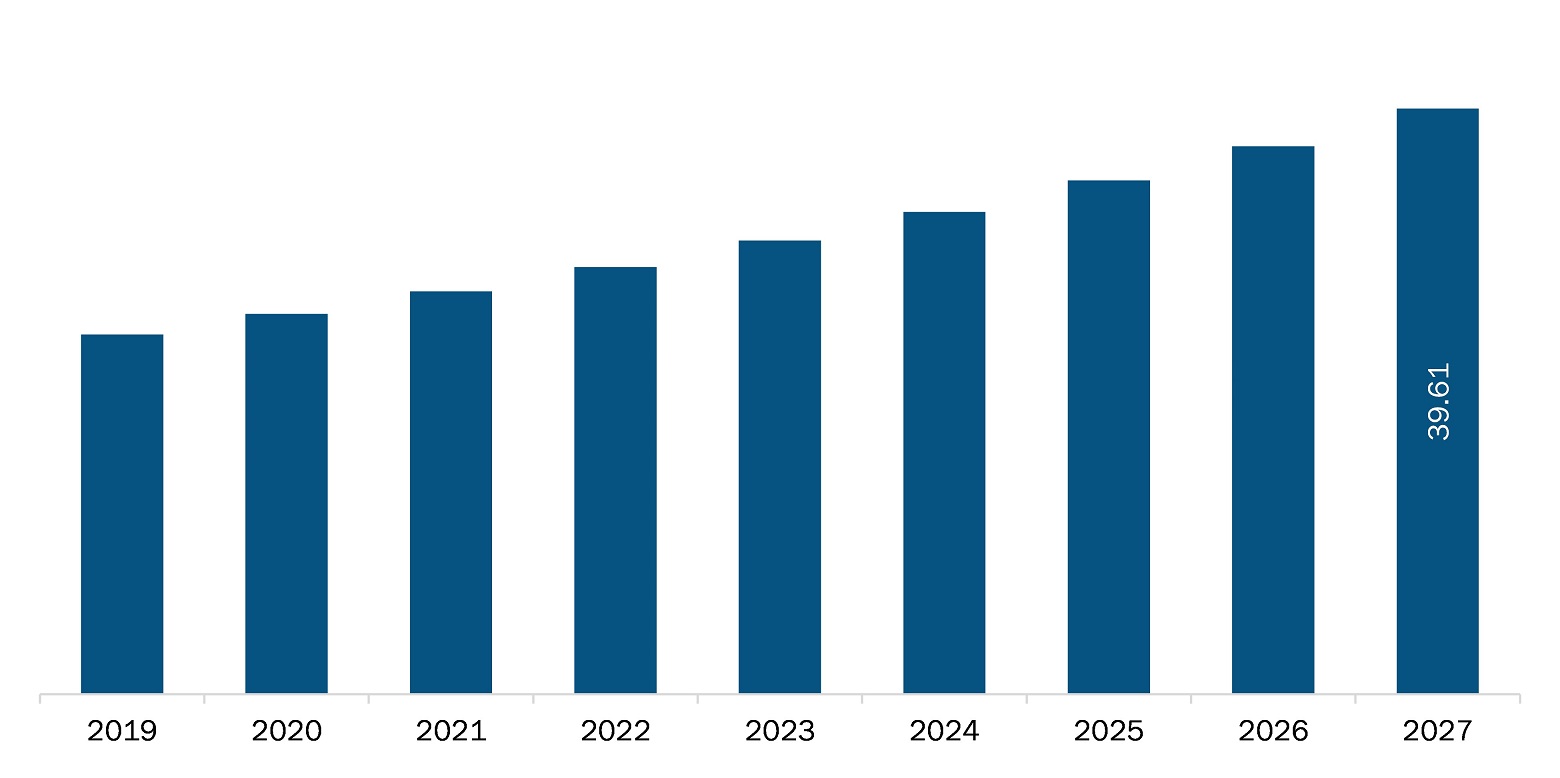The Middle East and Africa point-of-care data management software market is expected to reach US$ 39.61 million by 2027 from US$ 25.7 million in 2020; it is estimated to grow with a CAGR of 6.4% from 2020 to 2027.
The growth of the market is attributed to the increasing incidence of infectious diseases and lifestyle-related diseases, and rising product launches and development for data management. However, the high cost of point-of-care data management systems hinders the market growth.
Point-of-care (POC) data management software is a platform used in various critical care settings in the hospital, such as intensive care unit (ICU), operating room (OR), and emergency department (ED). It facilitates the patients' health data management and analysis. Also, the growth of the Middle East and Africa point-of-care data management software market is likely to proceed with the help of the introduction of new products into the market, which aim to deliver inexpensive care at the facilities located at the closest-possible distances from the patients’ location. New technologies or products are being refined and improved to deliver easier-to-use devices with incremental improvements in analytical performance. Moreover, the market growth is attributed to the increasing strategies such as product innovations, mergers, and acquisitions by the key players to expand their reach and stay competitive in the market. For instance, in March 2020, Siemens Healthineers and Marienhaus Hospital Group entered in a partnership, with an option to extend for an additional five years. Siemens Healthineers has planned for a digital strategy to interconnect 18 hospitals with Marienhaus to streamline clinical processes. Such advancements in newly launched devices would propel the overall market growth during the forecast period.
The COVID-19 outbreak has shown substantial effects in Middle East and Africa. The pandemic has adversely affected the new software launch activities in countries across the region. Apart from this, a huge population already faced a growing burden of noncommunicable diseases, making them more vulnerable to the novel coronavirus. Moreover, South Africa reported rapid rise in the number of COVID-19 confirmed cases along with other nations across the world. Currently, the country recorded more than 16 lakh positive cases and around 56,363 deaths. Thus, the manufacturers in the country are not able to take organic or inorganic initiative for the point-of-care data management software market growth. Thus, the factor is likely to hamper the partial growth of the market.

- This FREE sample will include data analysis, ranging from market trends to estimates and forecasts.
MIDDLE EAST AND AFRICA POINT-OF-CARE DATA MANAGEMENT SOFTWARE MARKET SEGMENTATION
By Application
•
Glucose Monitoring• Hematology
• Cardiometabolic Monitoring
• Infectious Disease Devices
• Coagulation Monitoring
• Cancer Markers
• Urinalysis
• Others
By End User
- Hospitals/Critical Care Units
- Diagnostic Centers
- Clinics/Outpatient
By Country
- Saudi Arabia
- South Africa
- UAE
- Rest of Middle East and Africa
Company Profiles
- Abbott
- Siemens Healthineers AG
- F. HOFFMANN-LA ROCHE LTD.
- Randox Laboratories Ltd
- Radiometer Medical ApS
- THERMO FISHER SCIENTIFIC INC.
Middle East and Africa Point-of-Care Data Management Software Report Scope
| Report Attribute | Details |
|---|---|
| Market size in 2020 | US$ 25.7 Million |
| Market Size by 2027 | US$ 39.61 Million |
| CAGR (2020 - 2027) | 6.4% |
| Historical Data | 2018-2019 |
| Forecast period | 2021-2027 |
| Segments Covered |
By Application
|
| Regions and Countries Covered |
Middle East and Africa
|
| Market leaders and key company profiles |
|
- Historical Analysis (2 Years), Base Year, Forecast (7 Years) with CAGR
- PEST and SWOT Analysis
- Market Size Value / Volume - Regional, Country
- Industry and Competitive Landscape
- Excel Dataset
Recent Reports
Testimonials
Reason to Buy
- Informed Decision-Making
- Understanding Market Dynamics
- Competitive Analysis
- Identifying Emerging Markets
- Customer Insights
- Market Forecasts
- Risk Mitigation
- Boosting Operational Efficiency
- Strategic Planning
- Investment Justification
- Tracking Industry Innovations
- Aligning with Regulatory Trends





















 Get Free Sample For
Get Free Sample For